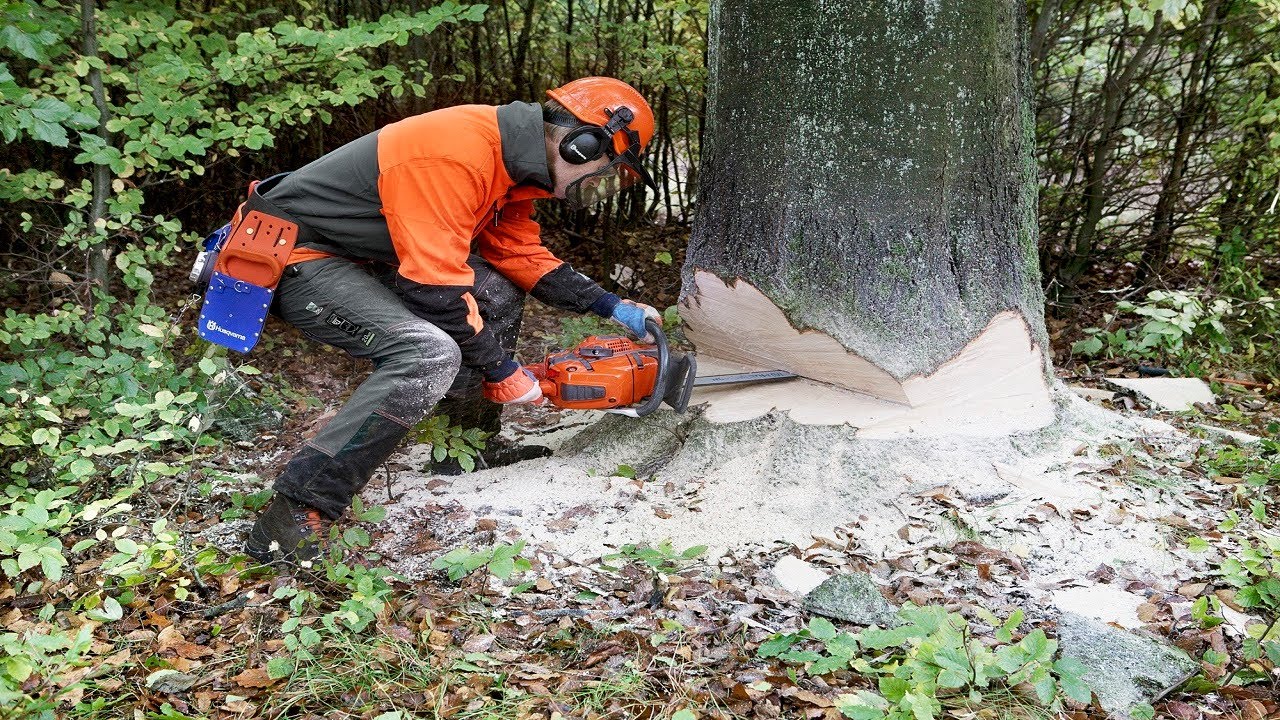A towering tree can be the centerpiece of a garden, but sometimes, they outgrow their welcome. Whether it’s casting too much shade or posing a safety risk, removing a tree might become necessary. But how do you cut down a tree quickly and safely at home? It’s not as simple as grabbing a saw and getting to work. This guide will walk you through everything you need to know, from preparation to the final cleanup, while emphasizing safety every step of the way.
Safety First, Always
Removing a tree is no trivial task. While it might seem like an achievable DIY project, it comes with risks. According to the Royal Society for the Prevention of Accidents, tree cutting mishaps contribute to numerous injuries every year in the UK. For this reason, safety gear is non-negotiable.
Equip yourself with the basics:
- A hard hat to shield against falling branches.
- Protective goggles to keep debris out of your eyes.
- Sturdy gloves and steel-toe boots for protection and firm footing.
- Earmuffs if you’re using loud equipment like a chainsaw.
Above all, ensure no one else is in the area while you work. Keeping children and pets far away is especially critical.
Plan Before You Cut
Trees, especially mature ones, are larger and denser than they seem. Before you even touch a saw, step back and plan. Look at the tree’s structure, noting the direction it leans. This will likely indicate where it will fall.
Decide on an escape route as well––two clear paths at a 45-degree angle away from the tree’s expected fall line are ideal. It may seem excessive, but having an exit strategy could save your life if things don’t go as planned.
Getting to Work: Step-by-Step Guide
1. Start with Crown Lifting
If you’re dealing with a large tree, crown lifting should be your first step. This is the process of removing lower branches before taking down the trunk. Not only does it reduce the weight of the tree, but it also eliminates any branches that might obstruct your view or interfere with your cutting. Use a telescopic pruning saw or pole lopper for high branches.
For instance, I once tackled a massive oak in my Wolverhampton backyard. The crown was sprawling, and without lifting it first, there’d have been chaos cutting through the trunk.
2. Proper Technique for Cutting the Trunk
Here’s where the real action begins. Use a chainsaw or a handsaw, depending on the tree’s size. Start by making a wedge-shaped cut (the notch) on the side where you want the tree to fall. This cut should be about one-third of the way into the trunk and at a downward angle.
Next, move to the opposite side and execute the felling cut. This cut should be just slightly higher than the notch. Stop cutting before reaching the notch to keep the tree stable until its final fall. And when the tree begins to tilt, retreat to your pre-decided safe zone quickly but calmly.
3. Handling the Tree Stump
After the tree is down, you’ll likely be left with a stump. At this stage, you have a few options. Many people in Wolverhampton opt for tree stump removal, particularly if they plan to replant or want a clean backyard. This can be done manually with an axe and a shovel, although it’s labor-intensive.
Alternatively, you might consider tree stump grinding. This involves using a machine to grind the stump below ground level, leaving the area smooth and ready for landscaping. If DIY stump grinding feels intimidating, plenty of tree service professionals in Wolverhampton specialize in this.
Common Mistakes to Avoid
- Underestimating the Tree’s Size
Trees often look manageable, but their weight is deceptive. Even a small tree can cause significant damage if not handled correctly. - Ignoring Local Regulations
Wolverhampton, like many areas, requires permissions for tree removal, especially if protected species or conservation zones are involved. - Neglecting Cleanup
Felled trees leave behind a surprising mess. Plan for proper disposal beforehand, whether it’s hauling wood off-site, composting smaller branches, or splitting logs for firewood.
Do You Need a Professional?
If this guide seems overwhelming, don’t worry. While some homeowners prefer DIY tree removal, others rightly opt to call in professionals. Consider hiring arborists or tree surgeons if:
- The tree is near power lines or structures.
- You’re unsure of local regulations and permits.
- The tree is extensively diseased or decayed, making it unpredictable.
Luckily, Wolverhampton has no shortage of reputable tree service companies that offer everything from crown lifting to stump grinding. They bring in-depth expertise and ensure both speed and safety.
Wrapping Things Up
Cutting down a tree at home requires planning, effort, and a sharp focus on safety. By starting with protective gear, planning your cuts, and responsibly dealing with the stump, you can transform what seems like a daunting task into a manageable one. Of course, never hesitate to call in experts when the job feels out of reach.
Now that you’re equipped with the know-how, are you ready to tackle your tree? If you need professional help in Wolverhampton, contact a local tree service for advice or assistance.
Take Action Today!
Whether it’s a towering oak or a pesky stump, there’s no time like now to spruce up your garden. If you’re in Wolverhampton, connect with trusted professionals to make your tree removal process quick, safe, and seamless. Or, grab your tools and start confidently—we’ve got your back!


Comments are closed